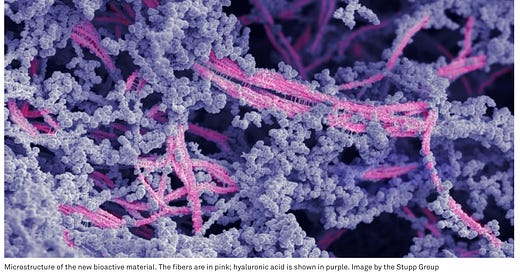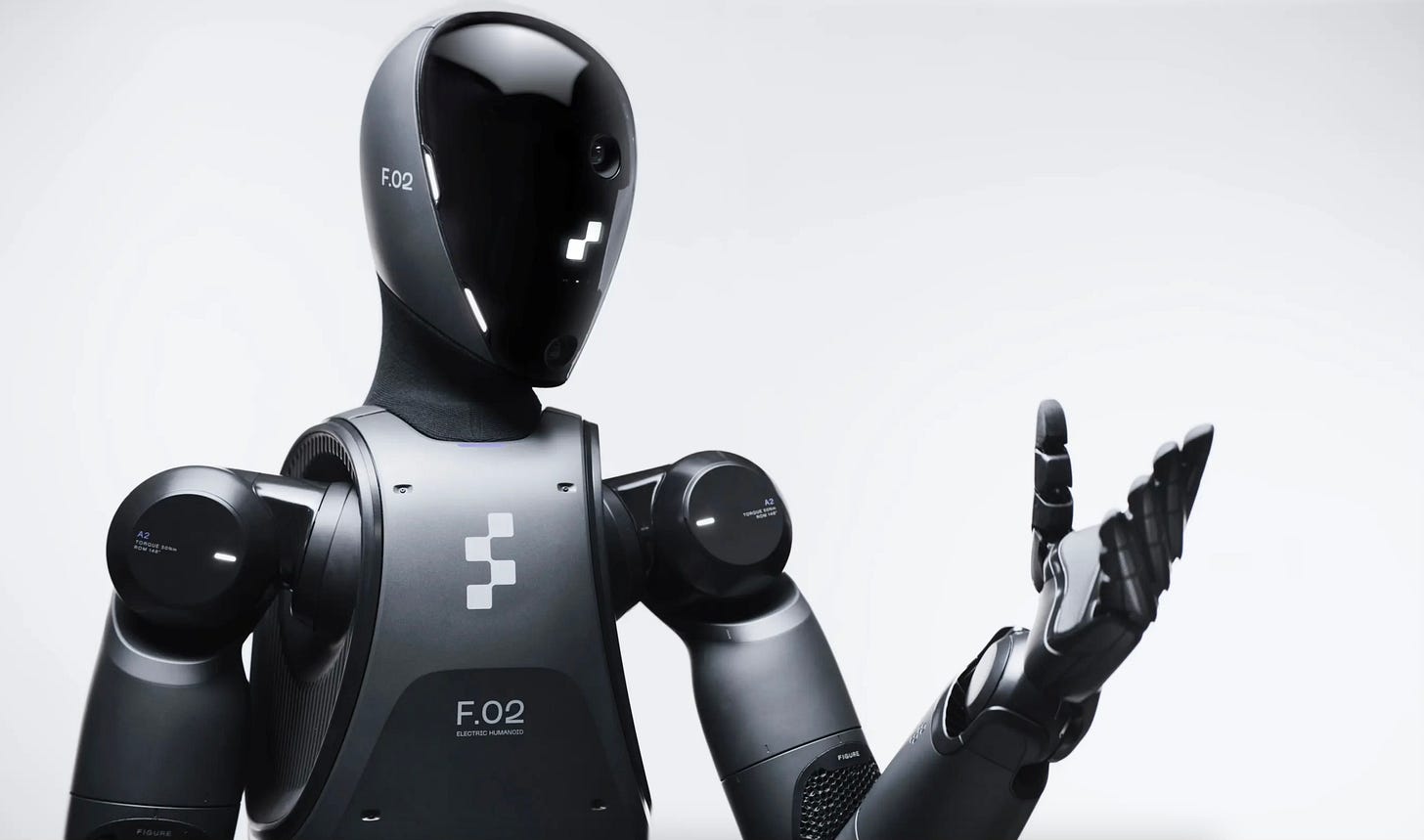Regenerating Knee Cartilage, Humanoid Robots and Adding Muscular Strength to our clothing
August 15
This week we discover a new method to regenerate the cartilage in our creaking knees. We catch up with developments in the humanoid robot space and we examine a new fabric that can add muscular strength to our clothes. Finally we investigate a new development in LED technology that will allow our clothes to become lit up screens.
Regenerating Knee Cartilage
A team at Northwestern University in Chicago have developed a new bioactive material that successfully regenerated high quality cartilage in the knee joints of large animals. The rubbery goo is a complex network of molecular components that work together to mimic cartilage’s natural environment in the body.
Cartilage is a critical part of our joints. When it becomes damaged or broken down over time it affects our mobility and overall health. In adult humans our cartilage does not have an inherent ability to heal.
The team developed a new hybrid biomaterial that is made up of two components. A bio-reactive peptide that binds to transforming growth factor beta-1 (TGF-1). TGF-1 is an essential protein for cartilage growth and maintenance. The second component is a modified hyaluronic acid that is present in cartilage and the lubricating synovial fluid in joints.
The bioactive peptide was integrated with the chemically modified hyaluronic acid particles to drive the self organization of nanoscale fibers into bundles that mimic the natural architecture of cartilage. This provides an attractive scaffold for the body to use its’ own cells to regenerate cartilage tissue. Bioactive signals in the nanoscale fibers encourage cartilage repair by the cells on the scaffold.
The material was tested in sheep with cartilage defects in the stifle joint. This is a complex load bearing joint in the hind limbs similar to the human knee. Sheep cartilage is similar to human cartilage in that it is stubborn and difficult to regenerate.
The plan is for the new material to applied to joints during surgery. Future steps will include human trials before the treatment becomes widely available.
Humanoid Robots
We have been waiting for the robot helpers in every home for some time now. It is a more difficult task than originally envisaged however progress is being rapidly made. California based robotics startup, Figure has just released their second generation humanoid robot. Initially aimed at industrial production lines however they claim that we will all have robot butlers in the near future.
Figure was founded in 2022 and has made great strides since. Their new generation robot has added, AI systems, computer vision, a better battery pack, more electronics, sensors and actuators. Onboard microphones and speakers allow one to one conversations with humans. AI models in conjunction with OpenAI (ChatGPT creator) are used to provide the conversational engine.
A new vision model allows the humanoid to make sense of what its’ cameras capture and make decisions on what, if anything, needs to be done. There are cameras in the animated face panel as well as an array around the back (why not let a robot have eyes in the back of its’ head, we could use them at times).
Greater computational power than previous generations allow real world tasks to be performed autonomously. The latest iteration of Human scale robot hands enable a wide range of human like tasks. The hands have 16 degrees of freedom and human equivalent strength.
Futurist Peter Diamandis predicts that by 2040 there will be more humanoid robots than cars. There are over 30 companies worldwide developing humanoids. Predicted pricing ranges between US$10,000 and US$50,000. Competition will no doubt make this cheaper. We may one day own one or two humanoid assistants each.
Clothes with Muscles
I am not talking about muscle shirts that are designed to be tight fitting and allow you to show off your pecs (if you have them). I am talking about Textile muscles which originated in Sweden at Linkoping University.
In 2017 the team demonstrated how an ordinary thread with a coating of conductive plastics (PEDOT and polypyrrole) can be stretched and shrunk when subjected to an electrical current. The team then wove several threads, connected in parallel together into one fabric. However the dynamics of fabric is very complex.
In a recent project the team demonstrated a sleeve with woven textile muscles that can provide haptic feedback. The sleeve allowed for social touching at a distance. Two users wear a sleeve that is connected to the same computer. When one person stroked the sleeve the other person felt it. This may be a way for the visually impaired to gain feedback about their environment.
The gaming industry is a likely user of haptic feedback clothing. If you get shot in game, you feel the shot. The next step following gaming uses is to increase the weight that each textile muscle can lift.
The long term vision is to make entire items of clothing where textile muscles are integrated. This would provide the user with a soft exoskeleton that is not visible on the outside. In areas such as aged care this may be a very useful application.
Full Color Fibre LEDs
Another area that we have spoken about previously is the ability to show full color displays on our clothing. Imagine a jacket with a flashing LED screen. You could become a walking billboard.
A team from the Hong Kong University of Science and Technology have developed a full color fibre light emitting diode utilizing perovskite quantum wires (PeQWs). This paves the way for innovative wearable lighting and display devices.
Fibre light emitting diodes (Fi-LEDs) are a flexible LED that is compatible with textile fabrication and has excellent spatial luminance uniformity. The team used porous alumina membrane templates on thin aluminum fibers to achieve this affect.
The team has demonstrated the fabrication of full color Fi-LEDs with emission peaks at 625 nm (red), 512nm (green) and 490nm (blue).
Future developments will focus on enhancing the efficiency and stability of the Fi-LEDs, using new perovskite compositions for a broader range of color and integrating these devices into commercial textile products. It won’t be long before I will have an “your ad here” sign on the back of my jacket. A whole new way for influencers to promote products.
Paying it Forward
If you have a start-up or know of a start-up that has a product ready for market please let me know. I would be happy to have a look and feature the startup in this newsletter. Also if any startups need introductions please get in touch and I will help where I can.
If you have any questions or comments please comment below.
I would also appreciate it if you could forward this newsletter to anyone that you think might be interested.
Till next week.







